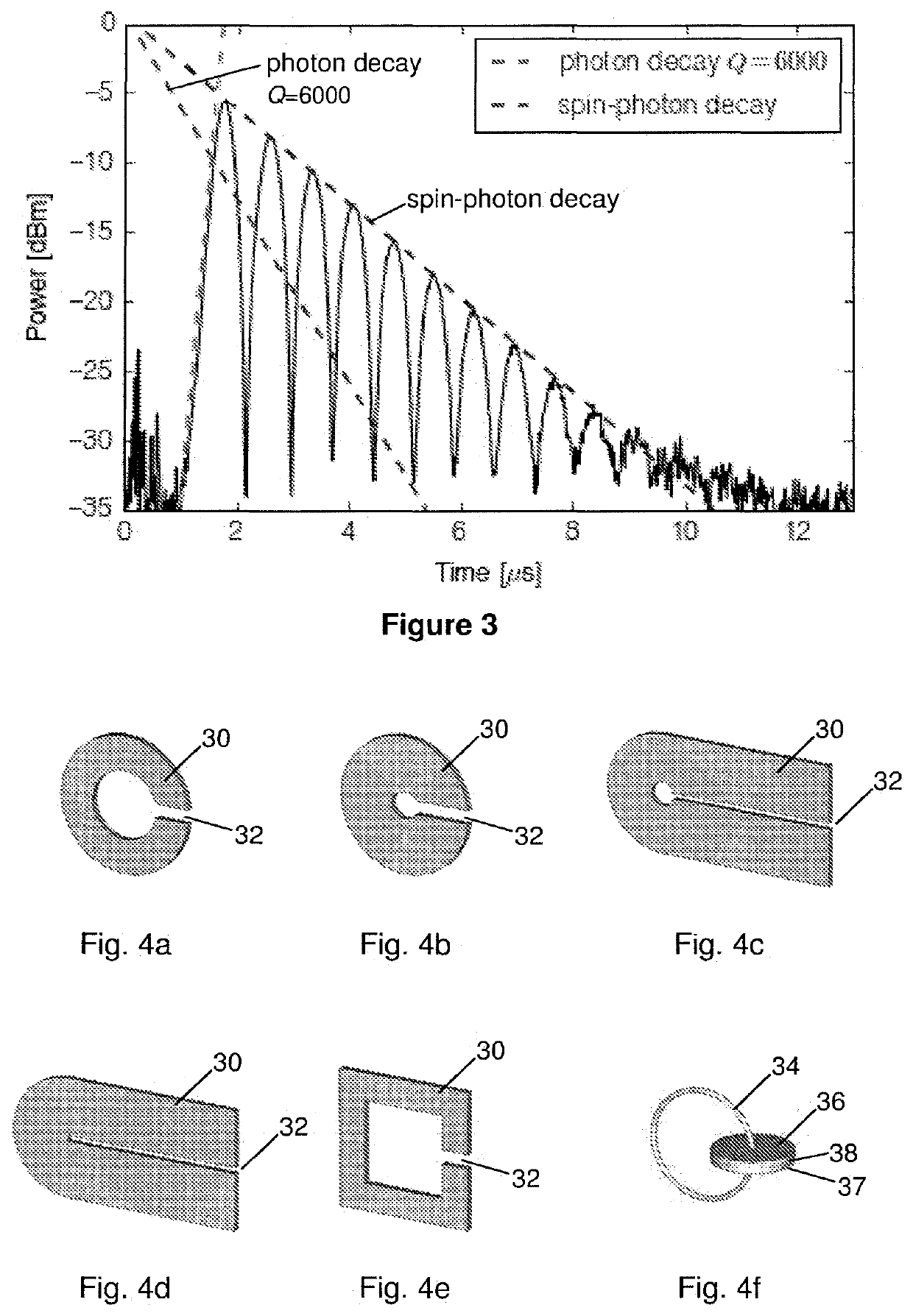Apparatus and method for establishing quantum oscillations
a quantum oscillation and apparatus technology, applied in the field of apparatus and method for establishing quantum oscillations, can solve the problems of inability to achieve a spin-photon coupling rate greater than 1 hz, inability to achieve the upper limit of the spin-cavity excitation transference anyway, and the weak electromagnetic field of the cavity mode to allow efficient coherentness
- Summary
- Abstract
- Description
- Claims
- Application Information
AI Technical Summary
Benefits of technology
Problems solved by technology
Method used
Image
Examples
examples
[0081]As mentioned above, a working room-temperature device has been demonstrated and its performance characterised. In more detail, this device is based on a strontium titanate (STO) dielectric resonator containing a single crystal of p-terphenyl highly doped with pentacene. The resonant frequency of the cavity matches the X-Z transition of the pentacene at 1.45 GHz and has a quality factor (Q) of around 10,000. The spin decoherence time of the pentacene is approximately 10 μs, which is roughly the same as the cavity mode lifetime (˜7 μs). The pentacene-doped medium was excited by a ˜4 ns optical pulse (600 nm) and produced a Rabi oscillation frequency of ˜2 MHz and period of about 0.5 μs. This corresponds to a spin-photon coupling rate of 1 MHz. The Rabi oscillation frequency is due to the spin-ensemble and cavity mode populations ‘splitting’. A number of oscillations (at least 10) in the cavity mode population were observed (see FIG. 2) during the lifetime of the phenomenon.
[0082...
PUM
 Login to View More
Login to View More Abstract
Description
Claims
Application Information
 Login to View More
Login to View More - R&D
- Intellectual Property
- Life Sciences
- Materials
- Tech Scout
- Unparalleled Data Quality
- Higher Quality Content
- 60% Fewer Hallucinations
Browse by: Latest US Patents, China's latest patents, Technical Efficacy Thesaurus, Application Domain, Technology Topic, Popular Technical Reports.
© 2025 PatSnap. All rights reserved.Legal|Privacy policy|Modern Slavery Act Transparency Statement|Sitemap|About US| Contact US: help@patsnap.com



